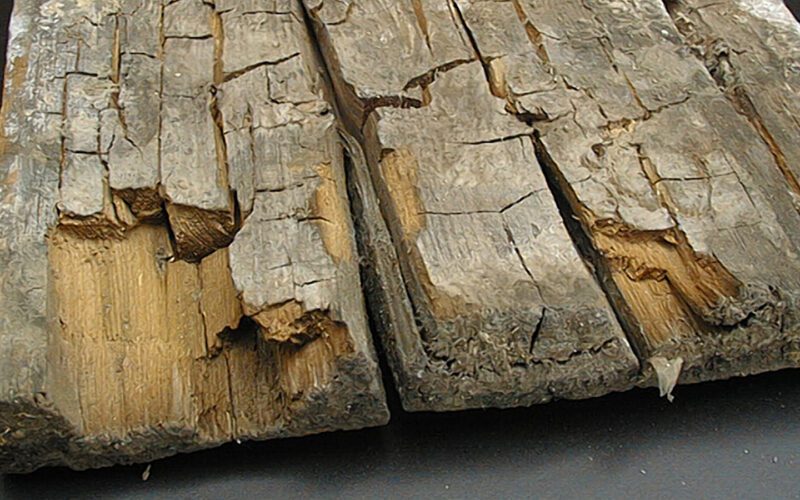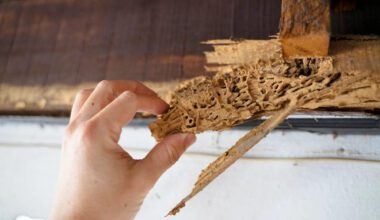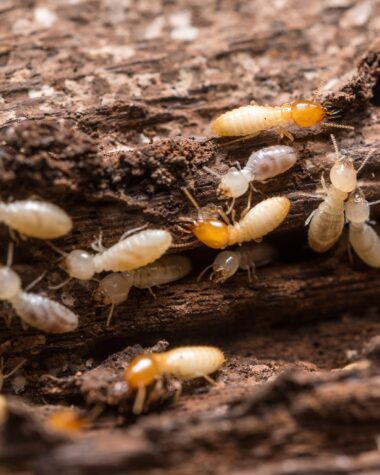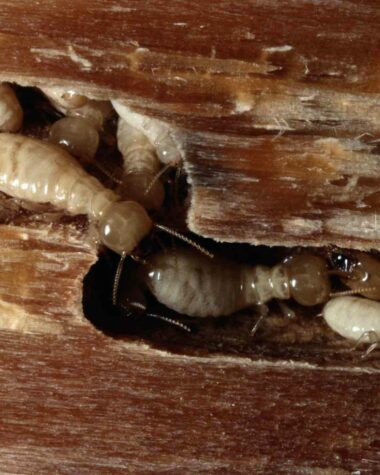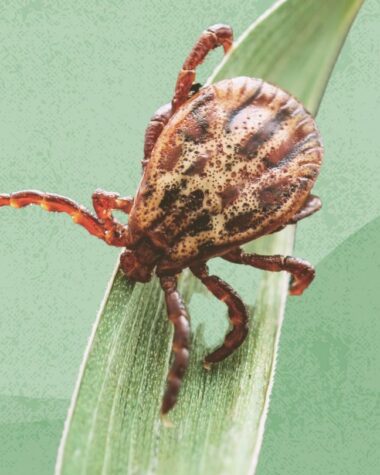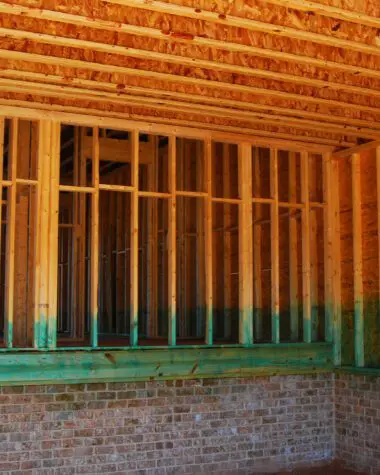Rotten Wood and termite invasion is a common cycle in nature, but it is a detrimental threat to homeowners. Wood damages are a serious concern and can cost much money to repair. That’s why being aware of preventive measures is vital.
Wood is the prevalent building material, so it is important to know how to protect it, what causes wood rot, indications of termite damage, and most importantly, how to prevent further destruction.
If you’re looking for information on what kind of wood damage you had in your home, you’re in the right place. Here, we will discuss the difference between wood damage and termite and how to spot and prevent it. Let’s begin.
What is Wood Rot?
Wood rot, as its name suggests, is the decaying of wood caused by fungal growth and other organisms. When exposed to water and moisture, fungi can thrive and cause wood infection. They can grow rapidly and can cause major destruction to any wooden structure.
Here, we listed the most common types of wood rot.
White Rot
When the affected wood turns white or yellowish and feels spongy, it is a tell-tale sign of white rot. Fungi responsible for white rot eat the lignin in wood, exposing the white-colored cellulose behind. White rot usually occurs in temperatures between 60 to 90 degrees Fahrenheit.
Brown Rot
Contrary to white rot, brown rot fungi attack the cellulose in wood, making it look dry or brownish. The absence of cellulose may result in wood shrinking and turning into a small cube-shaped- also known as Cubical Fracture.
Unlike white rot, brown rot can spread rapidly without needing moisture, making it hard to contain.
Soft rot
Soft rot fungi decompose wood slowly but can survive between 0 to 110 degrees Fahrenheit in cold and hot temperatures. Soft rot fungi eat cellulose, thus creating a honeycomb appearance in wood. They are typically found in fallen logs and trees but can still invade your home, given the right condition.
What are the Most Common Signs of Wood Rot?
To properly solve wood rot infestation, first, we need to know its early signs. Most signs are not visible, so when you see one, grab a flashlight and check the affected area. Here, we listed some of the most common signs of wood rot.
Related: Watch Out: Signs of Wood-Destroying Insects and How To Eliminate Them
Visible Wood Damage
Visible wood damage is the clearest evidence of wood rot around your house. Cracking, splitting, discoloration, splintering, and warping are the most common signs of wood rot. As the wood infestation continues to grow, wood becomes soft and loses its ability to bear weight and hold together.
Fungal Growths
If you notice yellow, white, brown, and purple patches in your wood, it’s a sign that fungi are starting to colonize it. It can be cottony and powdery, and you must treat them as soon as possible to prevent further damage. Most fungi thrive in damp places with enough moisture.
Earthy Smell
When wood-decaying fungi infest wood, it produces a musty or earthy smell. The cause of this odor is the breakdown of wood components such as cellulose and fibers. So if you smell something musty in areas with wood, then wood rot is possible.
Exterior Damaged and Moisture
Exterior damages such as cracks, damaged roofings, missing pieces, and holes can be the starting point of fungi infestation on wood. When water gets in, moisture can build up, leading to fungi infestation. When the wood is wet, there’s a chance that fungi can grow and thrive.
How to Prevent Wood Rot
Different methods can prevent wood rot. There are step-by-step guides for preventing fungi and other organisms from devouring your wood. We listed some of the most effective and preventive methods for keeping fungi away.
Rot Inspection
A thorough inspection of your property is vital in preventing wood rot. If you notice leaking after heavy rain, fix the damaged roofings immediately to avoid further leaks that can cause moisture to build up on your wood. Contact your local fungi control services to assess if wood rot exists.
Fungicide Treatment
Fungicides are special antifungal chemicals used to prevent the spread of wood rot. It is commonly used to destroy fungi colonies on wood and can be an added protective coat to your wood. Also, it is widely used by experts against wood-destroying fungi.
Wood Replacement and Waterproofing
Waterproofing is a method of sealing the wood by using a wood sealer. It adds protective boundaries against fungi and other wood-destroying organisms. But when wood rot has already occurred, and the damage is extremely severe, a wood replacement would be a better option.
Exterior Caulking and Water Resistant Paint
Caulking is a special type of sealant used to cover tiny holes, gaps, and wood depressions that prevents moisture from penetrating, which can cause deterioration and fungi infestation.
Additionally, it can last longer than other sealants and withstand any weather condition. Water-resistant paint is also an ideal solution to prevent moisture penetration in wood.
What is Termite Damage?
A termite is a wood-destroying insect that builds its colonies in wood. It’s their primary food source, and they eat from the inside, making it hard to detect their damage. Termites are the most common wood pests in every home; they invade doors, attics, windows, and anything with wood.
Signs of Termite Damage and Infestation
Most termite damages are not easily detected, so we look for signs that can lead us to infestation. Most of the signs are visible and easy to spot, so if you see one, call your local pest control services to assess the problem.
Mud Tube
Mud tubes are interconnected tunnels of mud, soil, wood residue, and termite spit. They used this to connect their nests and to food sources. Moreover, they used this to look for other areas to invade and to protect themselves from sunlight and air.
Hollow Sound
A termite might invade your wooden structure if your wood wall sounds empty or hollow. Knock on your wood; if it produces a hollow sound, it clearly indicates that termites are invading your home. Ask for the assistance of your local pest control firm to better solve the problem.
Discarded Wings and Termite Waste
Subterranean Termites are the only termites that can produce wings. They swarm during mating season and are attracted to light and warmth. If you see them flying around your home, you are dealing with a severe termite infestation.
How to Prevent Termite Damage
There are various methods to prevent termite damage. One of the most effective is using termiticides by licensed termite control experts. You can also apply commercial and natural methods to prevent serious damage.
Keeping your house and surroundings clean are the first steps in preventing termite destruction. Make sure to check your wooden structure, especially after the rainy season. Immediately contact your local pest control firm if you see any signs of termite infestation.
Difference between Wood Rot and Termite Damage.
Termite damage and wood rot are different but can cause serious and long-lasting destruction to your home. The rotting of wood is caused by fungi, while wood-loving termites cause termite damage. They both have different prevention methods and require a specialist to eliminate them.
Conclusion
Fungi and termites are a threat to our homes. They can cause widespread destruction of our property in a few months. Unfortunately, the destruction is only visibly detected once the damage is huge. Luckily, there are prevention methods for both wood rot and termite damage.
Knowing the signs and preventive measures is key to keeping your home pest-free. Always remember to properly monitor your surroundings to avoid wood infestation. Keep your garden and backyard clean and throw away discarded logs which can be a home to wood-destroying insects and fungi.
